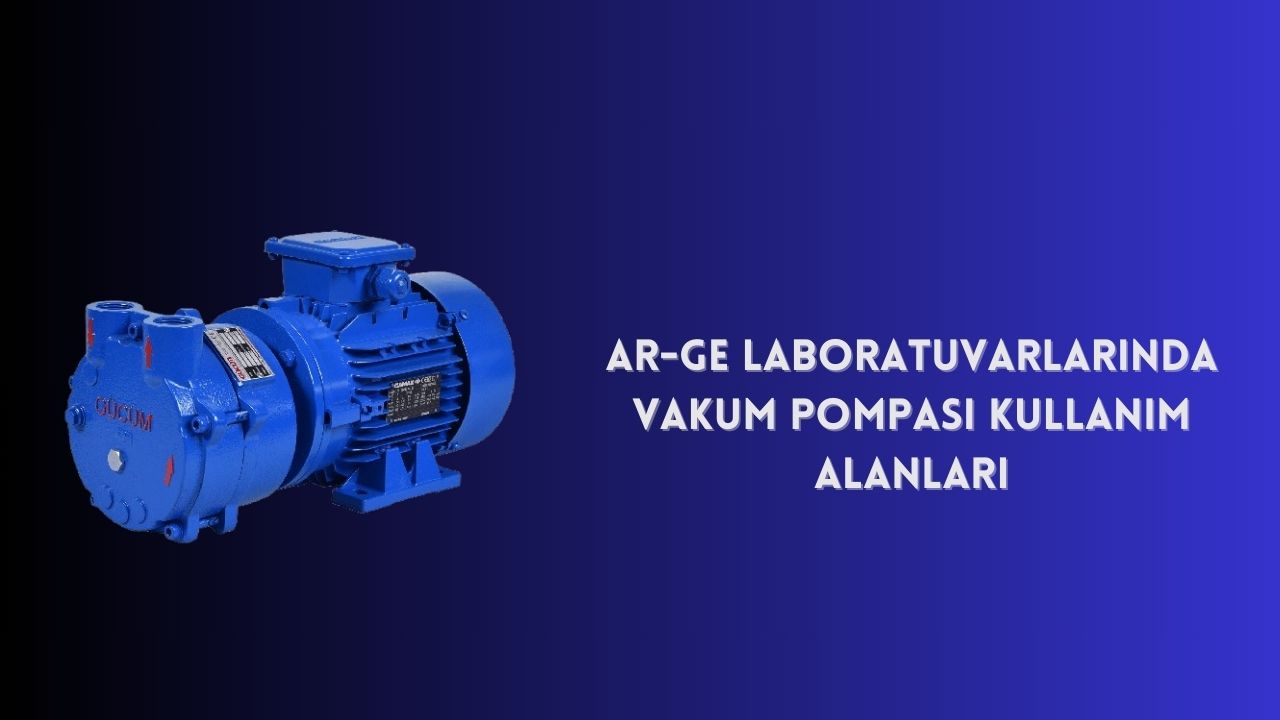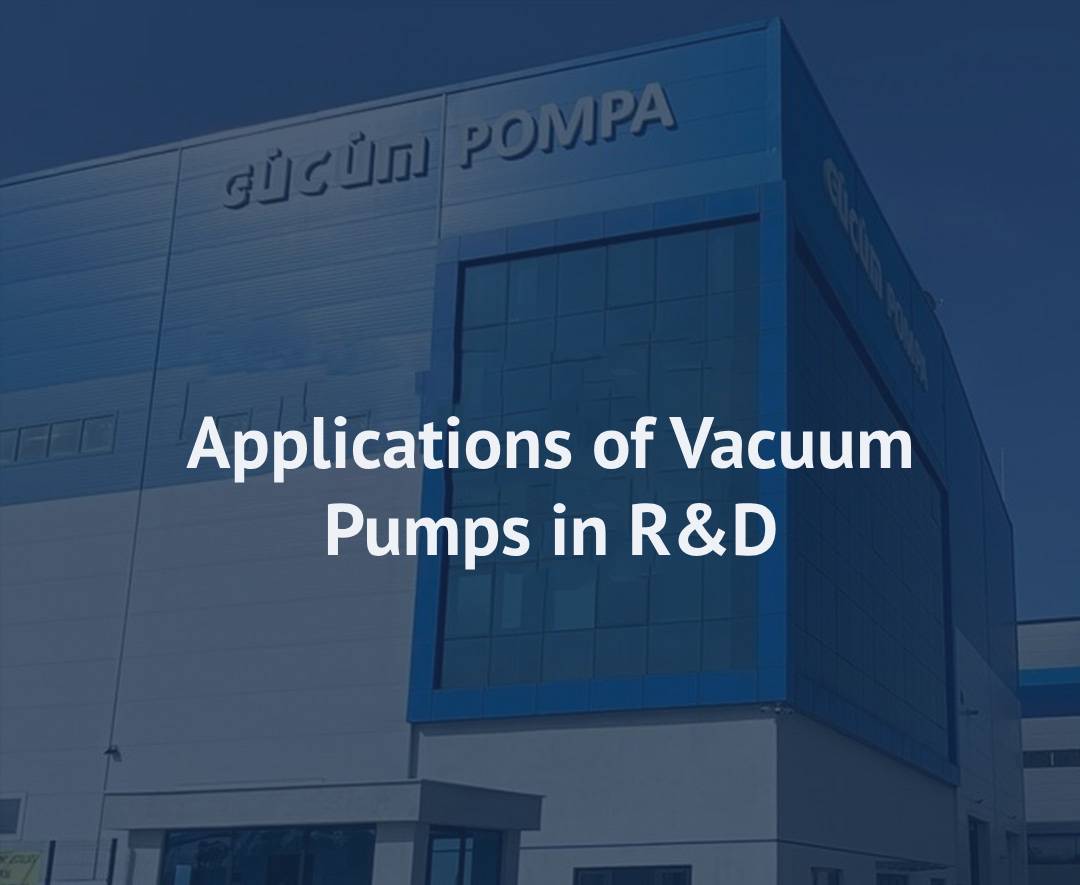Applications of Vacuum Pumps in R&D Laboratories
Applications of Vacuum Pumps in R&D Laboratories
Vacuum pump, a device that plays a significant role in R&D (Research and Development) laboratories, is used in numerous scientific and industrial processes. Vacuum pumps reduce pressure by removing air or gases from a specific environment, thereby enabling a variety of experiments to be conducted. The vacuum environment facilitates the acceleration of chemical reactions, purification of substances, and execution of temperature-sensitive processes. This article provides detailed information about the applications of vacuum pumps in R&D laboratories and their importance in scientific studies.
Working Principle of Vacuum Pumps
Vacuum pumps create a low-pressure environment by drawing air or gases from the surroundings. This low pressure allows for easier control of the physical and chemical properties of materials used in experiments and research. For example, under vacuum, liquids can evaporate at lower temperatures, chemical reactions can be accelerated, and an environment free of unwanted gases can be achieved. Vacuum pumps are essential for efficiently conducting processes that require precision in laboratory experiments. These devices also play a significant role in controlling temperature, especially when working with materials that need to be processed at high temperatures.
Vacuum environments are critical not only for the success of experiments but also for improving product quality, purifying substances, and performing specific reactions. Vacuum pumps actively participate in many different processes conducted in laboratories, making it important to understand their working principles. While these pumps reduce pressure by removing gases, they ensure that no external substances enter the environment. This ensures that only the desired elements and compounds remain in the environment.

Chemical and Biochemical Research
Chemical and biochemical research are among the most common areas where vacuum pumps are utilized. These studies are typically conducted under precise conditions, at very low pressures, and in controlled environments. Vacuum pumps are used in this field to remove dissolved gases, evaporate liquids, or accelerate chemical reactions. Additionally, in some biochemical experiments, particularly in genetic engineering and biotechnology applications, specific gas mixtures are required for cell growth, and vacuum systems assist in creating these environments.
A vacuum environment is particularly necessary for accelerating chemical reactions. Many chemical reactions can be sped up under vacuum because low pressure allows molecules to move and interact more quickly. Vacuum pumps ensure these processes are carried out more efficiently. Furthermore, processing under vacuum enables chemical substances to be obtained in a purer form.
Physical and Materials Science Experiments
Physical and materials science fields also offer a wide range of applications for vacuum pumps. Experiments in these areas are typically conducted under low pressure, and the vacuum environment allows for more precise observation of the temperature and physical properties of materials. For instance, the thermal properties of materials can be tested under vacuum. The vacuum environment lowers the boiling points of substances, allowing them to evaporate without excessive heating. Additionally, it aids in cleaning the materials used in research. In advanced physical tests, such as space research, a vacuum environment is required to simulate real space conditions by removing gases from the environment.
In physical and materials science experiments, the vacuum environment is used to understand how materials behave under different conditions. Tests conducted in this environment generally yield more precise and accurate results. Moreover, when material testing is performed under vacuum, the properties of various materials can be measured more accurately. This is a crucial step, especially in the development of new materials.
Electronics and Nanotechnology Research
Electronics and nanotechnology, as advanced engineering research fields, also rely heavily on vacuum pumps. Nanotechnology research, conducted at the atomic and molecular levels, cannot be performed without creating a vacuum environment. In the production of electronic devices, processing materials under vacuum ensures greater durability and precision. Particularly in semiconductor manufacturing, vacuum pumps are used to process and clean materials. Additionally, during the assembly of electronic components, vacuum environments help remove foreign substances, contributing to the longevity of the devices.
In nanotechnology, vacuum environments enable the manipulation of materials at the atomic level. How atoms and molecules interact with each other can be studied in greater detail in this environment. In the production of electronic devices, vacuum pumps provide a significant advantage, especially when working on very small structures. This allows for the production of smaller and more precise electronic components.
Pharmaceutical Research and Production
Pharmaceutical industry also places significant importance on vacuum pumps. In drug production, vacuum pumps are used in delicate processes such as freeze-drying, which is essential for the long-term storage of medications. Additionally, in the production of some drugs, a vacuum environment is needed to remove solvents or purify substances. Vacuum also plays a key role in sterilizing drugs. During the sterilization process, vacuum pumps assist in eliminating all microorganisms in the environment, ensuring the safety and efficacy of pharmaceutical products.
In pharmaceutical research, vacuum environments are widely used for purifying and sterilizing drugs. In experiments conducted in this field, a vacuum pump is necessary to enhance the quality and safety of drugs. This ensures that medications can be stored for longer periods without losing their effectiveness.
Microbiology and Sterilization
In the field of microbiology, vacuum pumps are used to inhibit the growth of microorganisms. In this area, vacuum systems are particularly preferred for sterilization processes. Additionally, for some microorganisms, it is necessary to create anaerobic conditions, which can be achieved using vacuum pumps. The vacuum system reduces the oxygen level in the environment by removing air and gases, thereby disrupting the growth conditions of microorganisms.
In microbiology laboratories, vacuum pumps are used to create sterile environments and prevent the spread of microorganisms. This is especially important for infection control and microbial analysis. Additionally, inhibiting microbial growth under vacuum increases the accuracy of microbiological analyses and ensures more reliable results.
Food Industry and Packaging
The food industry is another significant sector where vacuum pumps are employed. Vacuum packaging is used to extend the shelf life of food products and prevent spoilage. By applying a vacuum to food packaging, the oxygen level inside is reduced. This keeps food products fresh and prevents microbial growth. Additionally, during the processing of some food substances, a vacuum environment allows for faster and safer processing.
In the food industry, vacuum pumps are used both to preserve food and to enhance efficiency in production processes. Vacuum packaging prevents food spoilage and extends shelf life. Moreover, in some food processing operations, vacuum environments help preserve the properties of substances and enable processing with less energy.
Vacuum pumps are extremely important devices in R&D laboratories. These pumps perform various functions across different research and production fields. Chemical and biochemical research, physical tests, nanotechnology applications, and pharmaceutical production are among the many areas where vacuum pumps are indispensable. With proper use, they enhance the efficiency of research and enable experiments requiring precision. Therefore, every R&D laboratory must pay great attention to the proper selection and maintenance of vacuum systems.


